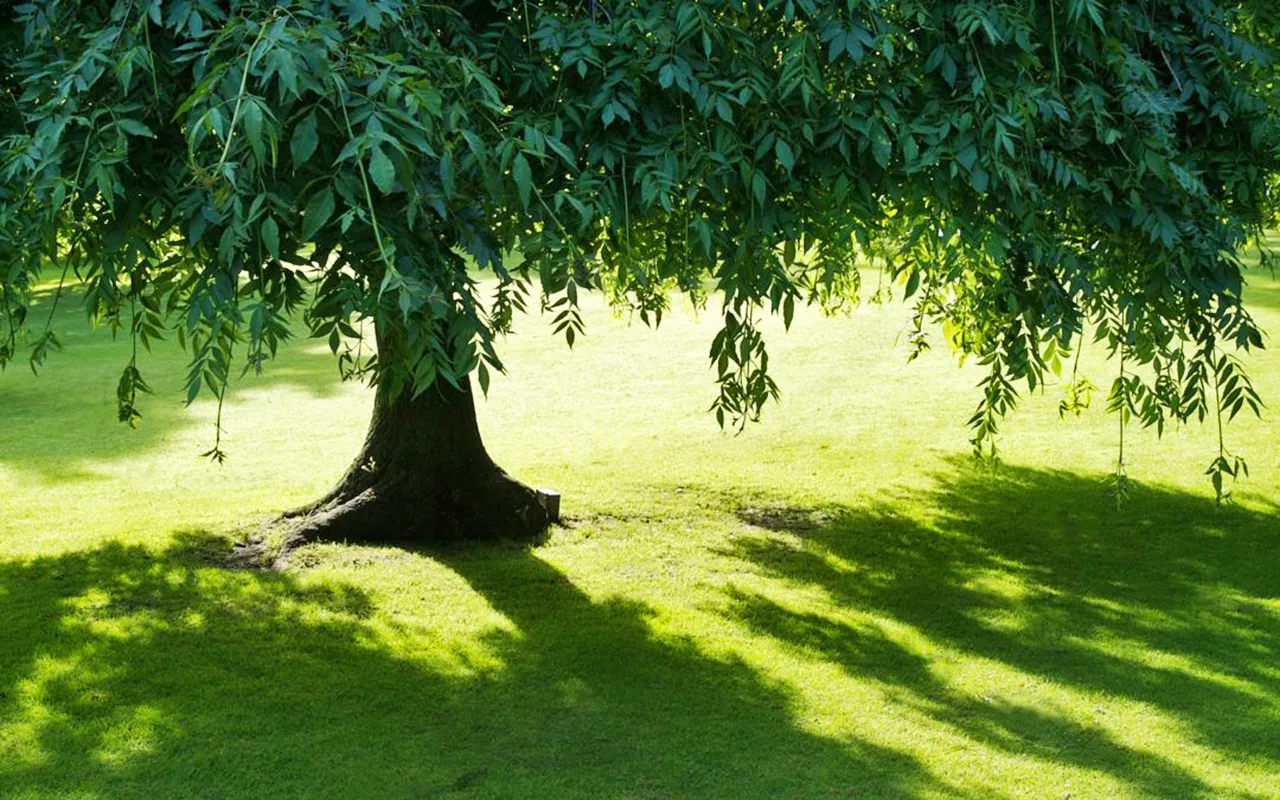
Written by s • The Magic of Shade in Gardening: Creating a Beautiful Oasis
When it comes to planning a new garden or enhancing an existing one, a crucial yet often overlooked consideration is shade. Understanding the nuances of shade is vital for making informed plant choices that thrive in various shaded areas and avoiding costly failures in your garden.
Shade comes in several forms, each with its impact on plant growth:
- Shade from Buildings: This kind of shade is forgiving and supports a wide range of plants. Areas shaded by taller buildings receive a full spectrum of light, although less intense, allowing plants to adapt to lower light levels and thrive. Observing the shade’s reach during different seasons helps determine the suitable plants for partially shaded zones.
- Shade from Deciduous Trees: These areas offer gardening opportunities, especially when mature trees have high branches spaced widely apart. Soil preparation and proper watering facilitate the growth of shade-loving plants like Japanese maples, camellias, and rhododendrons, capitalizing on a sunny window before the full summer shade sets in.
- Shade from Evergreens: Evergreens like spruce and fir present challenges due to dense, year-round shade. Some evergreens cast lighter shade and are more ‘garden-friendly.’ While certain plants like Japanese holly and cherry laurel can grow underneath evergreens, direct shade beneath these trees limits plant choices.
- Deep, Dry Shade: Found beneath dense deciduous trees or overgrown conifer hedging, this area receives minimal light and lacks sufficient moisture. Planting here can be challenging, but choices like periwinkle and big-root geranium thrive in such conditions, especially close around the tree trunks.
Understanding the type of shade in your garden is essential. Most gardeners classify shade into four main types:
- Light Shade: Sunlight is impeded by an obstacle like a wall or trees.
- Partial Shade: Sunlight for a few hours during early or late parts of the day.
- Moderate Shade: Receives dappled sunlight sporadically.
- Deep Shade: Found beneath dense trees with minimal light penetration.
Different shady areas in your garden bring complexities; for instance, areas close to walls may be dry due to wind protection, while dense evergreens create acidic soil. Plants like holly, yew, and ivy thrive in such conditions with good compost and care, especially around the edges of shaded areas.
For a successful canopy-shaded area, consider planting in fall, allowing new plants to settle before spring’s leafy canopies return. Mulching and watering in dry months enhance plant health once shade returns fully.
Don’t disregard these dark spaces on your property; with care and effort, you can cultivate a delightful display. Here are a few plants worth considering, although the list isn’t exhaustive. Redcurrants, rhubarb, beetroot, and lettuce also fare well in shaded areas.
Here are some plant suggestions for shade:
- Shrubs: Camellia japonica ‘Brushfield’s Yellow,’ Fuchsia ‘Mrs Popple’ AGM, Hydrangea paniculata ‘Limelight’ AGM, Rhododendron yakushimanum ‘Koichiro Wada’ AGM.
- Grasses: Carex muskingumensis, Luzula sylvestris ‘Marginata.’
- Bulbs: Cardiocrinum giganteum, Convallaria majalis AGM (lily-of-the-valley), Eranthis hyemalis AGM (winter aconite).
Understanding the nuances of shade and its impact on plants allows for informed choices and broadens your gardening possibilities. Embrace the variety and beauty shade-loving plants offer, enriching your garden’s character and diversity.





